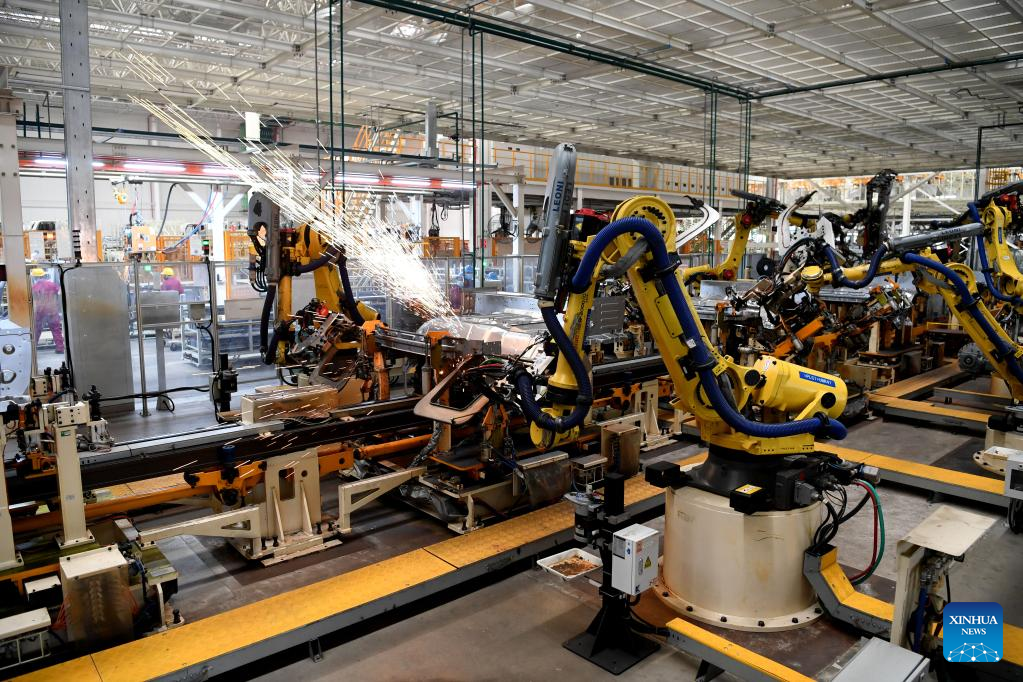Nation eyes new policy tools to bolster economic growth
 0 Comment(s)
0 Comment(s) Print
Print E-mail China Daily, May 13, 2022
E-mail China Daily, May 13, 2022

China is aiming to design and use new policy tools to prop up growth amid a challenging environment, and it will roll out measures when necessary, a senior official said on Thursday.
Economists said the move comes as the nation grapples with challenges and pressures from the resurgence of domestic COVID-19 cases and changes in the international situation.
They said China still has relatively plenty of room to step up fiscal and monetary policy support, and they expect fiscal stimulus measures such as infrastructure spending and more targeted monetary easing from policymakers to stabilize growth.
Han Wenxiu, a senior official with the Central Committee for Financial and Economic Affairs, said at a news conference on Thursday in Beijing that China aims to implement existing policies in the first half of the year. He said there is room for fiscal, monetary and other policies, and the country has various policy tools in hand.
China will consider new incremental policy tools, enhance well-timed regulation, and take such steps when necessary, he said.
More efforts will also be made to firmly deepen reforms, expand opening-up and fully unleash domestic demand potential, such as expanding effective investment and spurring consumption.
Chen Yulu, vice-governor of the People's Bank of China, said the central bank is also eyeing new incremental policies and will increase financial support for the real economy, like lowering financing costs.
Their remarks came after a meeting of the Political Bureau of the Communist Party of China Central Committee on April 29 at which it was decided to step up macroeconomic adjustments to stabilize the economy and meet the objectives set for economic and social development in 2022.
Considering China's faster-than-expected 4.8% first-quarter GDP growth amid downward pressure and the country's relatively mild inflation level, the experts said China still has the tools and relatively ample policy room at hand to bolster the economy.
However, they cautioned that there is a gap between China's first-quarter growth and its annual growth target of around 5.5%, and they called for additional policy measures to cope with the downward economic pressure.
Luo Zhiheng, chief economist at Yuekai Securities, said the government may consider incremental fiscal and monetary tools such as issuance of special treasury bonds, a reduction in the reserve requirement ratio and an interest rate cut.
Luo said he expects to see more steps to spur consumption, increase infrastructure spending and raise support for hard-hit sectors, small and medium-sized enterprises, and self-employed households.
Chen Jia, a researcher at the International Monetary Institute of Renmin University of China, said that he believes the nation has plenty of policy tools for macro policy adjustment, saying China is likely to accelerate the push for launching long-term projects in the first half.
Upon better control of the COVID-19 outbreaks and proactive policy support, China may see a rebound in some key economic indicators in the following months, Zhang Dawei, vice-chairman of the China Center for International Economic Exchanges, told a recent seminar in Beijing.
While China's industrial production and exports have been affected by COVID-19 outbreaks, experience shows that Chinese manufacturers can resume work and clear backlogs relatively quickly once restrictions are lifted, said Tommy Wu, lead economist at the think tank Oxford Economics.
Looking ahead, Wu expects that fiscal stimulus will do the heavy lifting to shore up growth.
"We now think that monetary easing will likely be targeted to support SMEs and infrastructure investment," he said. "While we still expect another RRR and policy rate cut in Q2, the chance is now lower and we don't expect additional broad-based easing in Q3, with capital outflow pressure amid the policy divergence with the United States acting as a constraint."






Go to Forum >>0 Comment(s)